

A report by Ruhani Kaur and Gunjeet Sra from Shiv Vihar, one of the worst affected areas of the north east Delhi violence
“Mohamdan ilake main kyun jaana hai? Aapko pata nahi hai unke pass guns aur petrol bamb hai? They will shoot you.” (Why do you want to go into a Muslim area? Don’t you know they have guns and petrol bombs? They will shoot you), says a stranger in Karawal Nagar, interrupting and talking over the shopkeeper who is guiding us to the specific address we want to go to. Karawal Nagar borders Shiv Vihar—one of the areas where the Muslim community bore the brunt of being violently targeted.
We start walking.
There is an acid factory that has been looted; an empty, burnt truck stands outside. Locals stand around, urging us to come in and take a look. The smell inside is overwhelming and nauseating, Vikas Kumar, who is keen to show us around alleges no one knew what went on inside the factory and they only saw vehicles loading and unloading goods occasionally. “Kissi mulle ki hai, Firoz Khan naam hain, wo yahan rehta nahi hai. 24 ki raat ko plan karke Mustafad ke mulle sab can bhar bhar ke legaye Hindu logo ke moonh pe phekne ke liye. Aaj humein ye bhi pata chala hai ki ye factory illegal hai. “ (This factory belongs to a Muslim named Firoz Khan who doesn’t live here. On the night of 24th, Muslims from Mustafabad planned and broke into the factory. They filled cans with acid so that they could throw them on the faces of Hindus. Today, we’ve also discovered that this factory is also illegal.” He then goes on to allege that one of his friends was injured in such an attack but is unable to share his name or the address of the hospital in which he is admitted. “Zaydha khaas nahi hai, jane pehchane wala hai,” (He is not a friend but merely an acquaintance), he says.
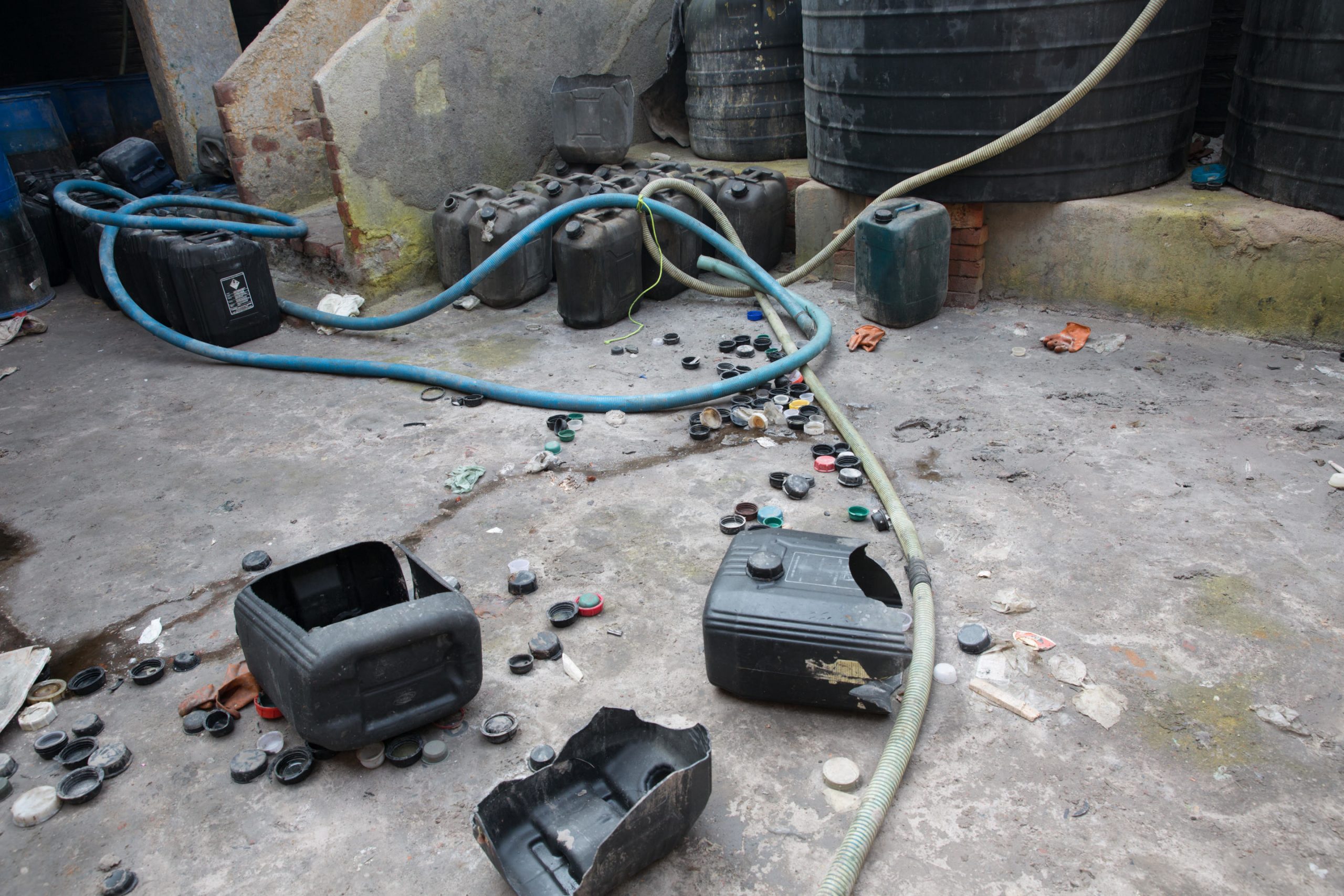 As we make our way deeper into Shiv Vihar, Vijay Singh who works as a tailor during the day and spends his evening as part of a wedding band asks us, pointing to two opposite ends of the road, “Aapko kiss side jana hai, India yaan Pakistan?” (Which side do you want to go to? India or Pakistan?” He goes on to say that the riots were unexpected and unplanned, “parli taraf se kuch log aaye the, unhone bhadkaya aur phir hamla kara,” (People came from the that side {pointing to the outskirts}, triggered people and started attacking them.) He also talks about the acid factory being attacked and says that the whole area used acid from the said factory to clean their toilets and homes but that night it was looted and used for arson.
As we make our way deeper into Shiv Vihar, Vijay Singh who works as a tailor during the day and spends his evening as part of a wedding band asks us, pointing to two opposite ends of the road, “Aapko kiss side jana hai, India yaan Pakistan?” (Which side do you want to go to? India or Pakistan?” He goes on to say that the riots were unexpected and unplanned, “parli taraf se kuch log aaye the, unhone bhadkaya aur phir hamla kara,” (People came from the that side {pointing to the outskirts}, triggered people and started attacking them.) He also talks about the acid factory being attacked and says that the whole area used acid from the said factory to clean their toilets and homes but that night it was looted and used for arson.
Once you cross the bridge and walk towards the cremation ground of Shiv Vihar, the atmosphere starts to change. A lull falls over, bustling city life comes to a standstill and you are confronted by Rapid Action Force every 50 meters.
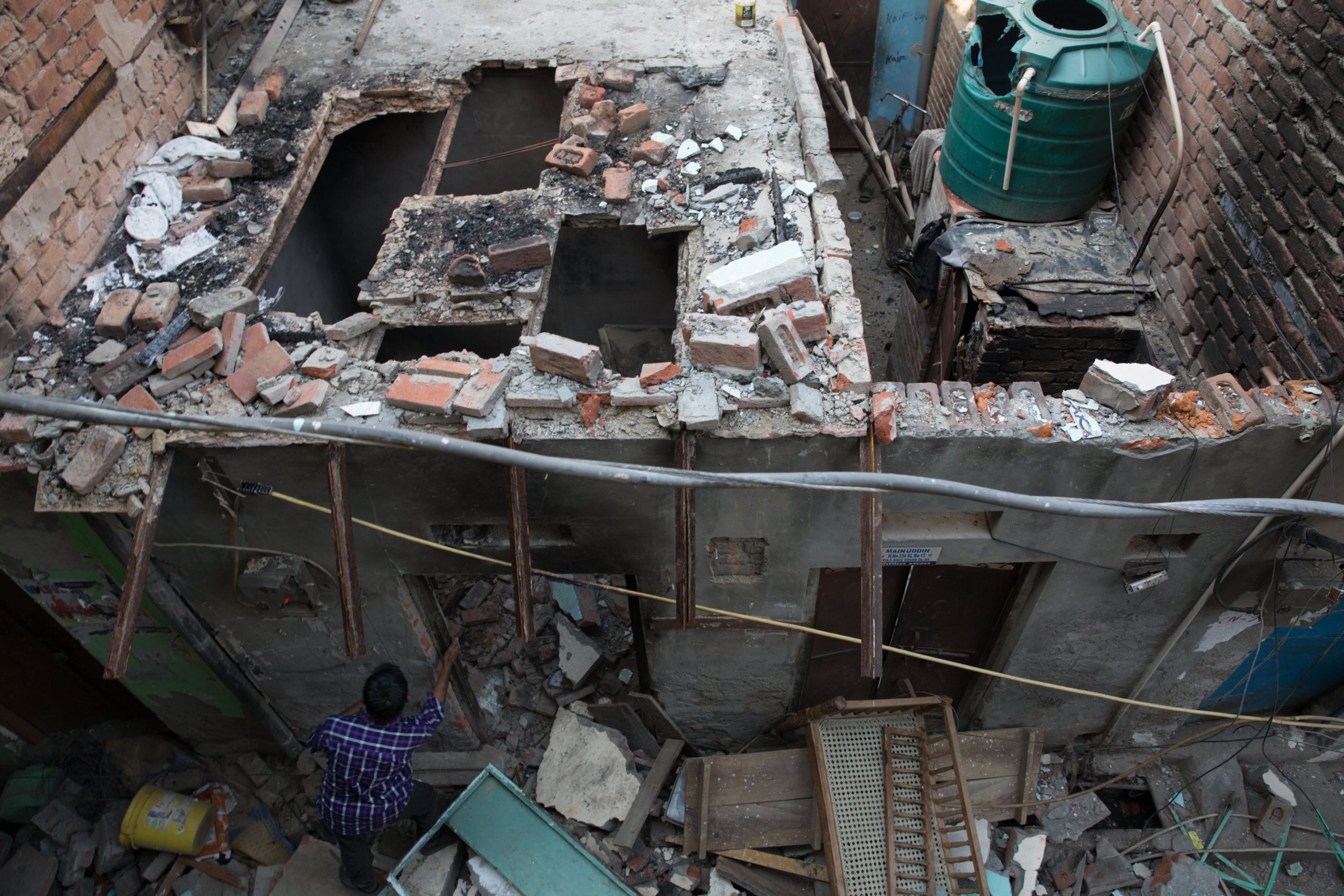 By now, our eyes have gotten accustomed to arson and seeing a car burnt here, a motorbike there, doesn’t garner much reaction. The first sign that we have reached a riot affected area is the half burnt Auliya mosque with cylinders inside—a failed attempt at blasting it off, next to is a half burnt house. Some people are in the process of locking it and stop when they see us. One of them is 25-year-old Mohammad Abrar who says that he and his family fled their homes on the night of February 24 and are now living in Shastri Park with some relatives. “Log Jai Siya Ram ke naare lagate hue aag laga rahe the, aur humein maar rahe the. Humare ghar to tode par humara sara cash, humari jewellery bhi le gaye. Abhi haalat dekh ke, aisa nahi lagta ki hum yahan wapas aa payenge. Humne teen baar lock lagayein hain ghar pe aur teeno baar woh toote hain.Kuch bacha to nahi hai par phir bhi kya karein,” (People were chanting Jai Shri Ram as they were burning down our houses and hitting us. They’ve not only broken down our houses but also taken all our cash and jewelry. Looking at the state of affairs, I don’t think we will be able to come back here. We have locked our houses 3 times and all 3 times, the locks have been broken. We don’t have anything left but still, what can we do?) he shrugs. Abrar also says that he was attacked by a mob on the morning of the 25th, when they found out he had come back home to lock it with his younger brother. When his brother saw the mob approaching, he fled the scene on his bike and Abrar had to hide. It was the Rapid Action Force deputed nearby that saved him,”nahi to aaj main jaata,” (else I’d be a goner.)
By now, our eyes have gotten accustomed to arson and seeing a car burnt here, a motorbike there, doesn’t garner much reaction. The first sign that we have reached a riot affected area is the half burnt Auliya mosque with cylinders inside—a failed attempt at blasting it off, next to is a half burnt house. Some people are in the process of locking it and stop when they see us. One of them is 25-year-old Mohammad Abrar who says that he and his family fled their homes on the night of February 24 and are now living in Shastri Park with some relatives. “Log Jai Siya Ram ke naare lagate hue aag laga rahe the, aur humein maar rahe the. Humare ghar to tode par humara sara cash, humari jewellery bhi le gaye. Abhi haalat dekh ke, aisa nahi lagta ki hum yahan wapas aa payenge. Humne teen baar lock lagayein hain ghar pe aur teeno baar woh toote hain.Kuch bacha to nahi hai par phir bhi kya karein,” (People were chanting Jai Shri Ram as they were burning down our houses and hitting us. They’ve not only broken down our houses but also taken all our cash and jewelry. Looking at the state of affairs, I don’t think we will be able to come back here. We have locked our houses 3 times and all 3 times, the locks have been broken. We don’t have anything left but still, what can we do?) he shrugs. Abrar also says that he was attacked by a mob on the morning of the 25th, when they found out he had come back home to lock it with his younger brother. When his brother saw the mob approaching, he fled the scene on his bike and Abrar had to hide. It was the Rapid Action Force deputed nearby that saved him,”nahi to aaj main jaata,” (else I’d be a goner.)
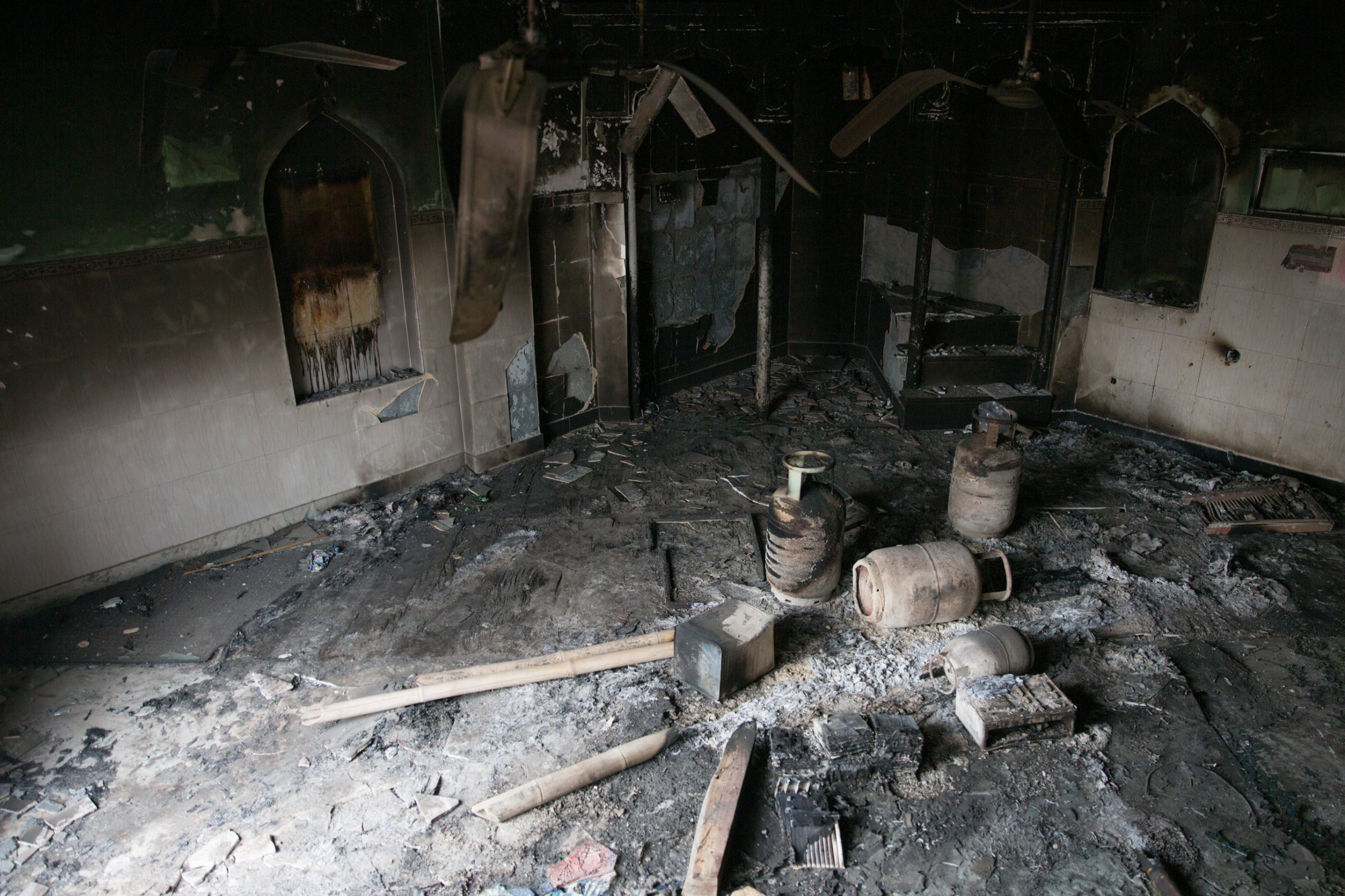 While we are talking to Abrar, a woman, who later identifies herself as Sabina and her son are walking swiftly with bundles on their heads, stopping only to say that they are going back to their village in Kannauj, Uttar Pradesh. Sabina says that she has no money to even buy tickets back home because all their cash is gone. “Dekhte hai ab kya intezam hota hai,” (Let’s see what we can muster up) she says. A Royal Enfield pulls up behind her and the couple riding on demand that we talk to them as well, we tell them we will find them later.
While we are talking to Abrar, a woman, who later identifies herself as Sabina and her son are walking swiftly with bundles on their heads, stopping only to say that they are going back to their village in Kannauj, Uttar Pradesh. Sabina says that she has no money to even buy tickets back home because all their cash is gone. “Dekhte hai ab kya intezam hota hai,” (Let’s see what we can muster up) she says. A Royal Enfield pulls up behind her and the couple riding on demand that we talk to them as well, we tell them we will find them later.
Ranno Begum and her family are also making their way out of Shiv Vihar and into a camp. Like the others, they too fled the scene on the night of the 24th and have only come back to collect the bare necessities and some documents that will help them apply for the government rehabilitation program. Ranno Begum sits on her haunches in the middle of the road and begins to wail, with each sigh and Allah! Her voice trails off. Her daughter was to get married on the 22nd of March and all her jewelry is gone, she says. While she’s crying, a semi-circle of motorbikes forms behind her. People stop and stare and seem unimpressed, they shout at us to come inside and talk to them.
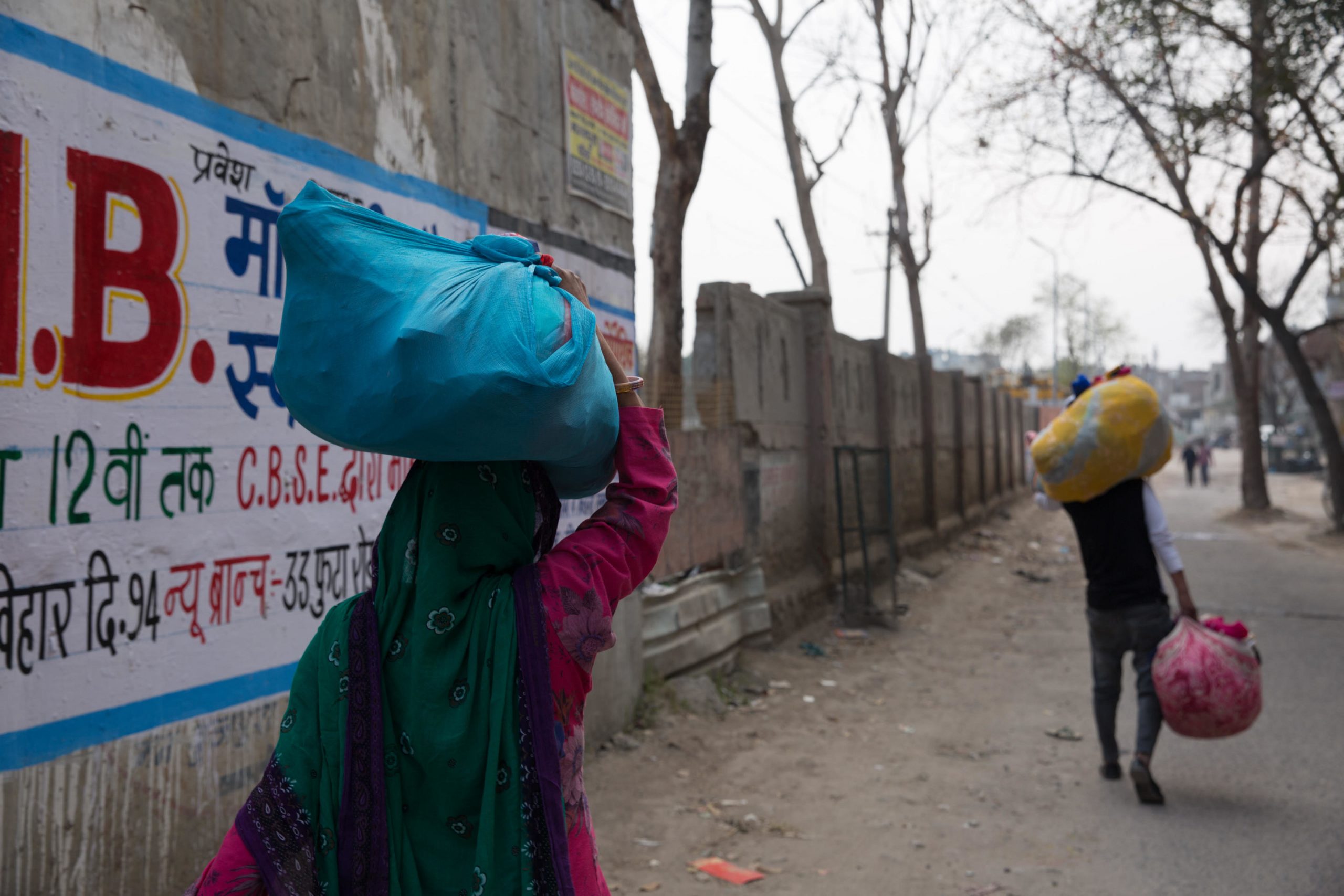 We ignore them and continue walking.
We ignore them and continue walking.
There are lanes and lanes of un-burnt shops with the words Jai Shri Ram written on them. Any shop that does not have that marker has been broken into and burnt down. Houses with Muslim names next to the Hindu ones have suffered the same fate. In one corner, some electricians are huddled together, figuring out the logistics of getting the power back on. The Rapid Action Force has barricaded interconnected lanes to avoid any further nuisance. In one such corner, Ram Varan Singh who is originally from Agra, stands crying because his shop has been burnt down. “20 saal lag gaye humein yahan,”(We’ve been here for 20 years), he says. Singh is one of the few Hindus whose livelihood has suffered and he is also the only person in the area to have not fled the scene after being a victim of mob arson. Staying temporarily with his neighbors, he says he is most worried about his children but is grateful that they are safe for now.
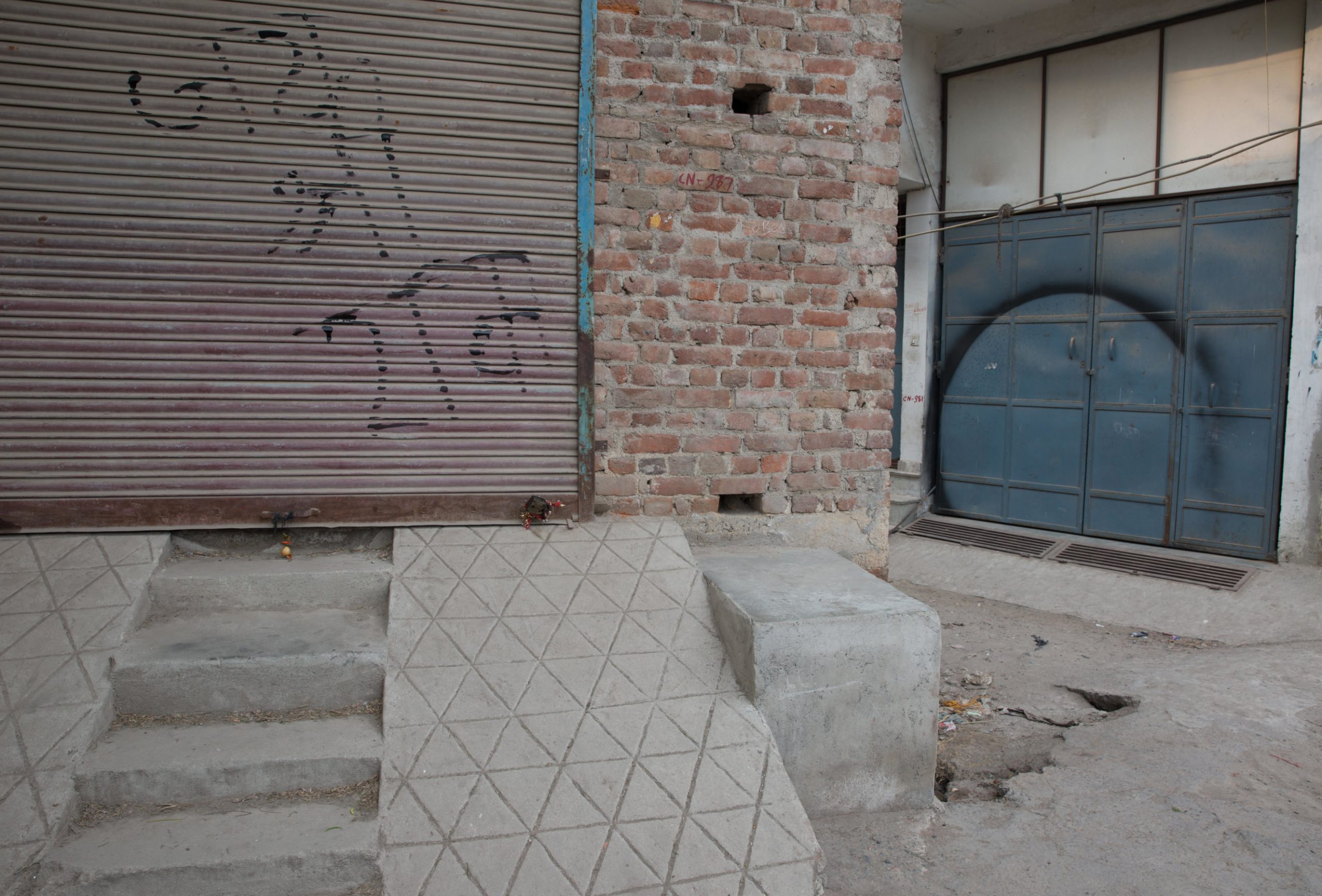 There is an eerie silence in these empty, burnt down streets, littered with people’s personal belongings, empty petrol bottles and Jai Shri Ram graffiti. But less than 200 meters away, in a street just like this, commerce is bustling. There is a farmers market on in full swing, dozens of children play freely outside their homes, women sit laughing on their doorways, men lounge around drinking tea. The spontaneous ease of life, a glaring disparity to next door where entire families have been displaced, consumed by a hateful fire that’s threatening to overpower everything and everyone around it.
There is an eerie silence in these empty, burnt down streets, littered with people’s personal belongings, empty petrol bottles and Jai Shri Ram graffiti. But less than 200 meters away, in a street just like this, commerce is bustling. There is a farmers market on in full swing, dozens of children play freely outside their homes, women sit laughing on their doorways, men lounge around drinking tea. The spontaneous ease of life, a glaring disparity to next door where entire families have been displaced, consumed by a hateful fire that’s threatening to overpower everything and everyone around it.